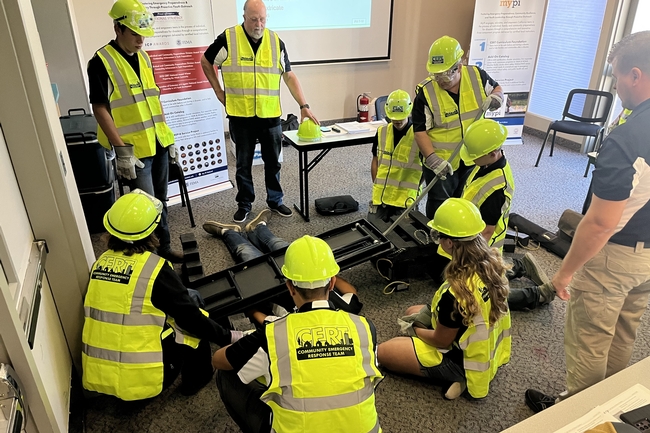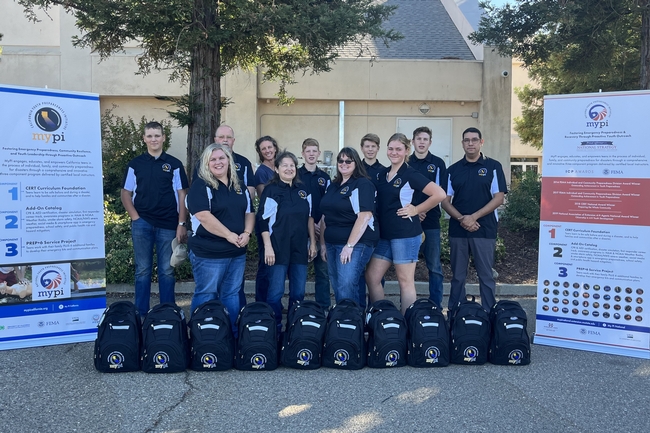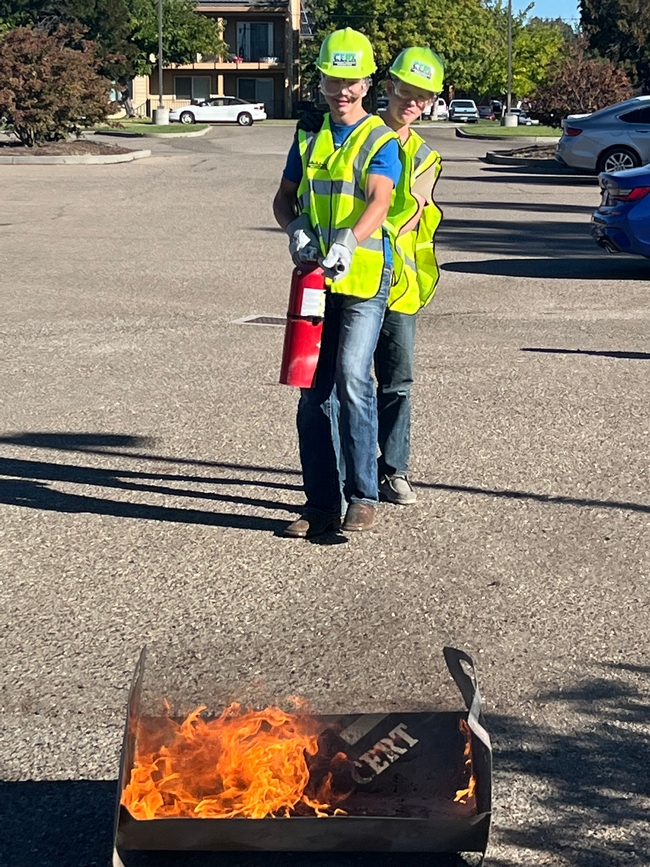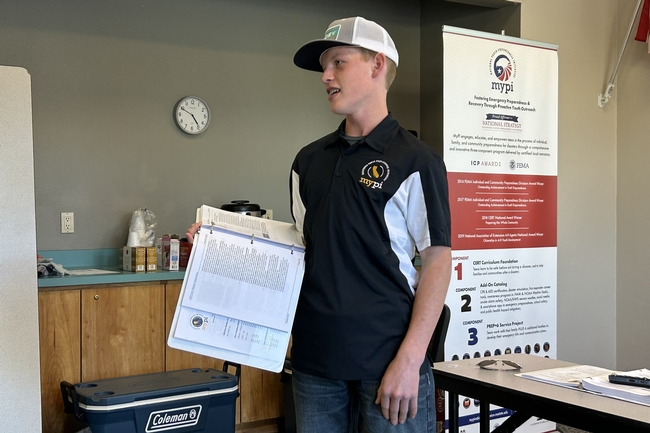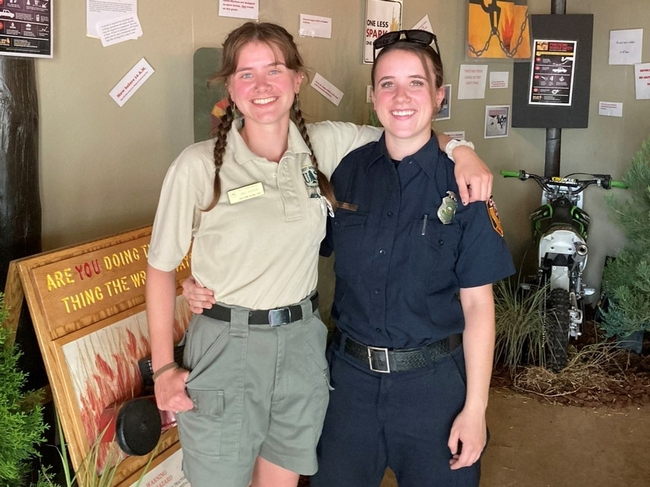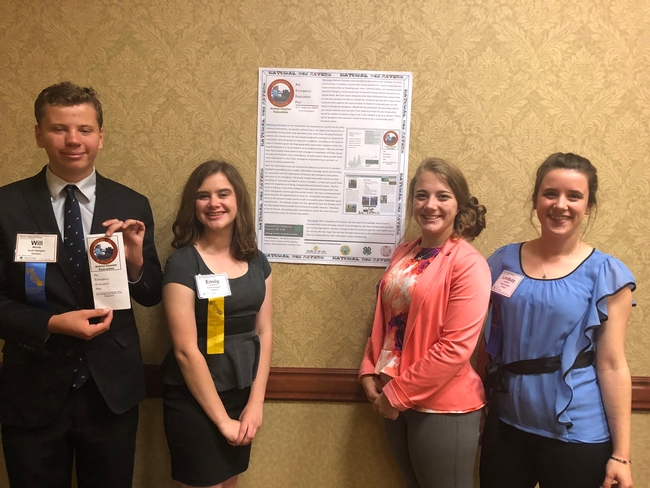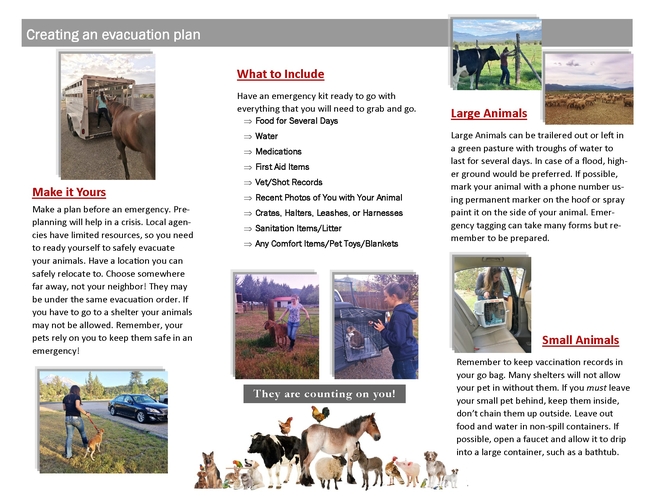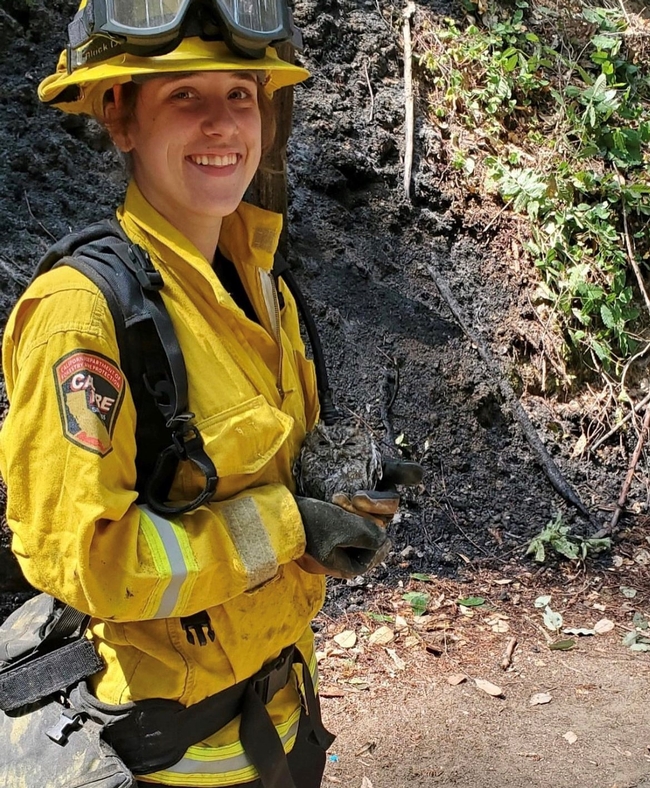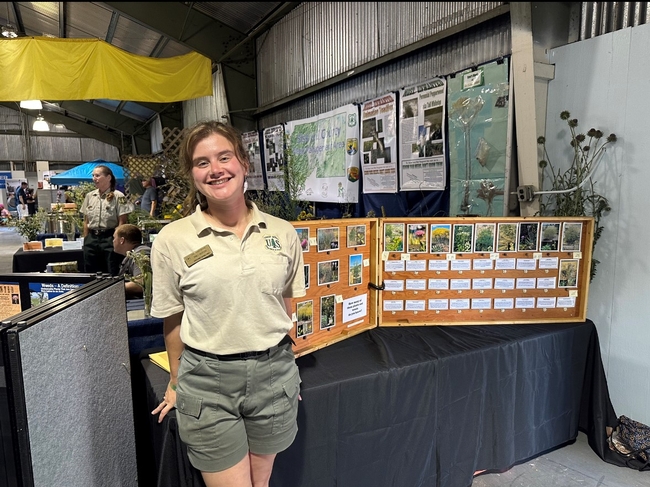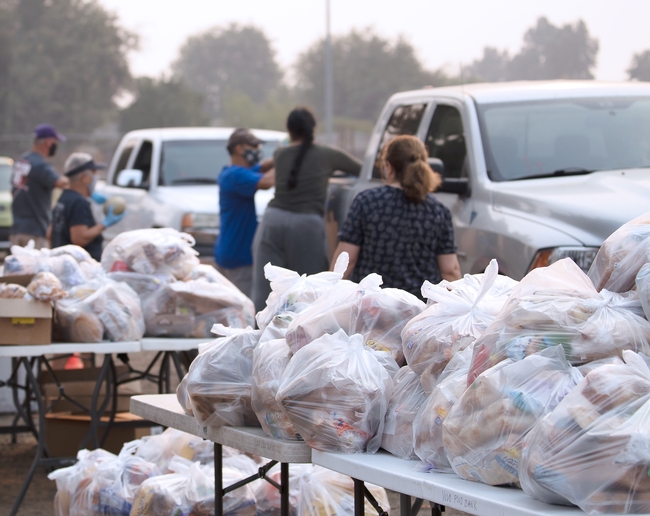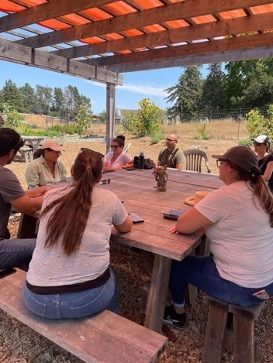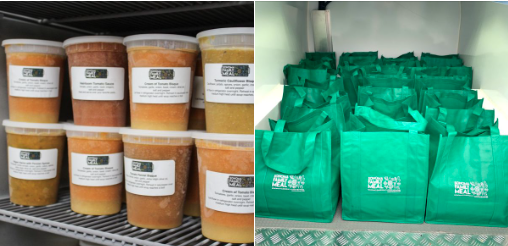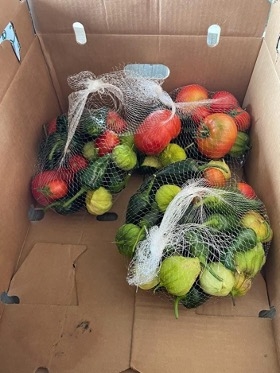Posts Tagged: emergency
Emergency preparedness program for youth takes root in California
4-H leaders, youth complete state's first MyPI instructor certification workshop in Tehama County
Disasters do not discriminate. They can impact people regardless of their race, color, creed, socioeconomic status – or age. That's why a nationwide effort to train young people in emergency preparedness continues to grow and is establishing itself in California.
The national MyPI (Preparedness Initiative) program, developed by Mississippi State University Extension, partnered with California 4-H this fall to train the state's first cohort of instructors, who will then lead trainings for young people in the coming months. With Northern California as the catalyst, organizers plan to spread the program across the state, said Nate Caeton, 4-H youth development advisor for Shasta, Tehama and Trinity counties.
“If you look at the research, everybody is affected by disasters, but young people even more so, for a number of reasons – whether because they don't fully understand what's going on, or they don't have the same experience or skill sets as adults,” said Caeton, who serves as the MyPI California manager. “But this takes a huge leap in addressing that.”
California is the 28th state/territory-level program to partner with the national MyPI team to train instructors – but the first to allow young people to participate in the three-day instructor workshop.
Of the 11 4-H-affiliated participants who completed the October training in Red Bluff, five were teenagers. The workshop, led by national MyPI trainers, included comprehensive Community Emergency Response Team (CERT) content developed by the Federal Emergency Management Agency, known as FEMA – covering medical operations, fire safety, light search and rescue, disaster psychology and more.
“By the end of day 1, the trainers were already commenting on the maturity level of the teens who had attended,” Caeton said. “They've been doing this training for a long time and they were definitely impressed – that says a lot about our young people.”
Potential disasters necessitate preparation by all
Bodie, a ninth grader in Shasta County, said the MyPI California workshop gave him a new perspective on his father's role and responsibilities as a CAL FIRE battalion chief.
“It was a great class, a great experience,” said Bodie, who participated in the training with his two brothers. “It was a 30-hour-long class – really long, but really fun; there was a lot of hands-on learning.”
Katy Zulliger, Bodie's mother, also attained instructor certification through the workshop. She said that, in their city of Redding and communities across the region, there remains considerable trauma from the devastating fires of 2018 – the Carr Fire and Camp Fire. Zulliger said that educating and preparing the public – including youth – will be crucial in meeting future challenges.
“There's a lot that can happen around here – from earthquakes to fire to flood to mudslides, and the list goes on and on…even, living on I-5, potentially tanker trucks spilling over,” she explained. “It's smart for the kids to learn how to think outside the box.”
Bodie noted that the workshop has made him more aware of his surroundings and potential contingency plans.
“When I'm out in the town, I really do think about what can happen in different scenarios – for example, maybe an earthquake or active shooter situation – and I ask myself, ‘What would I do? How would I respond?'” said Bodie, who is considering a career as a first responder.
Youth have a voice, role in boosting community resilience
The skills and knowledge gained from the MyPI program can equip young people to be leaders among their peers, and even in the broader community, when emergencies arise.
“Kids can actually use this and be engaged – instead of just being a watcher or video taker,” said Zulliger, a 4-H volunteer who has served as a club leader of the Palo Cedro 4-H club. “They have a voice and they can use it positively.”
Her sons – and the other two teens who completed the workshop – will help adult instructors organize and deliver the 10- to 12-week MyPI training to young people in their communities. As part of the program, tentatively slated to begin in Northern California by summer 2024, youth participants will be required to work with their families to create an emergency communications plan, assemble a disaster kit, and reach out to six other households to make similar preparations.
“This gives them some ownership over their own personal preparedness and the preparedness of their family and those they are closest to,” Caeton explained.
By partnering with schools, 4-H clubs and community groups, Caeton said the goal is to deliver the program to 125 young people, across five Northern California counties, by summer 2025 – before expanding participation across the state.
“I'm hoping it spreads like wildflowers, because it's definitely needed,” Zulliger said.
4-H youth project helps Siskiyou County prepare animals for emergencies
Planning brochure for pets, livestock fills crucial need as fires an increasing threat
With the McKinney Fire creeping closer to Yreka in the summer of 2022, Emily Jackson and her mother potentially faced the enormous task of getting all their goats, chickens, dogs and cats to safety – while Emily's father and twin sister Lindsay were away fighting the fires.
Fortunately, Emily and Lindsay had gained crucial knowledge about evacuating animals through a 4-H service-learning project they helped lead in 2018. A group of eight 4-H youths, ages 14 to 18, had created a “Pet Emergency Evacuation Plan” (PEEP) brochure, aimed at educating their neighbors in Siskiyou County about the necessary preparations for livestock and pets.
The brochure, available through the Siskiyou County website, remains in use today in this densely forested region that saw another spate of wildfires this summer. The PEEP project team was composed of Kylie Daws, Emily Jackson, Lindsay Jackson, Will Morris, Madison Restine, Maryssa Rodriguez, Emily Smith and Callahan Zediker.
Within those stressful hours in 2022 when the McKinney Fire prompted an evacuation warning during which residents could be required to leave at any moment, Emily Jackson said she and her mother had a game plan in place – thanks to her work on the PEEP project.
“At the time, it wasn't even on my mind,” Jackson said, “but looking back now, I know that having the experience from making that brochure was driving my thought process at the time.”
And while the Jackson family and their neighbors ultimately were not asked to evacuate in 2022, many community members have benefited from the hundreds of copies of the PEEP brochure in circulation, which prompts residents to at least think about what their animals would need in an emergency, Jackson said.
Pet and livestock evacuation tips were needed
Such a resource previously had not been available among the county's emergency preparation materials, according to Jacki Zediker, the 4-H regional program coordinator in Siskiyou County who advised the PEEP project group.
“One piece that was missing was how to help our communities understand that when they evacuate, and they take their pets with them…it's not as simple as just taking their pets with them,” said Zediker, citing the example that some shelters do not take in animals – or do not take animals without proof of vaccination.
Other items to add to the pet's emergency kit include food for several days, water, medications, comfort items or toys, and recent photos of the owner with their animal (proof of ownership).
Zediker had connected the young people with Jodi Aceves, senior deputy agriculture commissioner/sealer for Siskiyou County, who had been overseeing the county's Animal Control programs and emergency response.
“There's a lot of information out there for people evacuating, but not necessarily for livestock and pets,” Aceves said. “Unfortunately, we have had some fires where there were lots of pets and livestock lost.”
She met several times with the 4-H group, discussing the county's evacuation systems and processes and the role of the Office of Emergency Services and law enforcement agencies, and sharing key considerations in preparing for emergencies – such as having a pre-agreement in place with someone who could house an evacuee's animals.
Aceves praised the teens for distilling the vital information into a short and simple brochure that community members could easily read and remember. She also was impressed by the energy and genuine care that the young people put into the project.
“Most of their lives, every summer, they've been in fire,” Aceves said. “It's close to their hearts, and they've seen a lot of their neighbors and other people in the county either affected by fire or evacuated at some point.”
For Lindsay Jackson, in particular, fire and serving the community have been lifelong passions, inspired by her father's work in the area.
“My dad was a volunteer fire chief for the South Yreka Fire Department; he was doing that since I was about two or three, so I grew up watching him go to the trainings, go to a call,” she explained. “When I was 15, I joined the fire department as a cadet to help out with the medical side, but the more I volunteered, I really liked the fire side, too.”
Jackson added that Zediker has a special knack for nurturing and encouraging the interests of the 4-H participants and applying them in a productive way.
“Jacki was really good at figuring out where our passions were and then how we could put our passions into a service-learning project,” she said. “She knew I was really big into fire and helping the community in that way since I was young.”
Zediker also helped the Jackson twins on their senior project, a fire-safety field day at the South Yreka fire station. More than 100 schoolchildren learned fire safety basics, met firefighters and emergency personnel, and heard about 4-H from Lindsay and Emily.
4-H experiences, mentorship inspire career paths
The PEEP project group also was asked by several organizations to share their knowledge about emergency preparations for animals. In addition to presenting a poster about their work at the 4-H California Focus conference in 2018, the group handed out the brochure and shared information at a table during a Juniper Flat Fire Safe Council workshop and resource fair.
Beyond distributing the PEEP brochure at 4-H club meetings, school events and community meetings, the youths have lent their voices to advocating for emergency resources for animals. Zediker noted that they contributed testimonials that helped the county acquire grants for purchasing more portable kennels.
But the most enduring impact of 4-H participation and community service, however, is that those experiences were a springboard for the young adults' careers. Emily Jackson – who participated in 4-H from age 5 to 19 – is now working toward a master's degree in biology at Cal Poly Humboldt, studying how fire suppression and other factors have changed plant communities in the Russian Wilderness.
Whether training colleagues as a U.S. Forest Service crew lead for the past couple of summers, or leading lab sections in general botany as a graduate student, Jackson said she draws on her 4-H experiences – and Zediker's inspirational example – as she pursues a career in teaching.
“In my development as a young adult into an adult now, I cannot overstate how big of a role Jacki played in that,” Jackson said.
Her sister Lindsay, meanwhile, has pursued her passion for fire all the way through the fire academy at College of the Siskiyous, where she also earned her emergency medical technician (EMT) license. Most recently working on fires near Pondosa in Siskiyou County, Jackson has been a seasonal firefighter based at the McCloud CAL FIRE station since 2020.
“It's hard because, in the last three years, I haven't left Siskiyou County, there's just been so many fires here,” she said. “But it's nice being able to help your community and know you're making a difference.”
Lindsay Jackson intends to pursue a bachelor's degree in leadership studies at Cal Poly Humboldt in hopes of getting a full-time position with CAL FIRE.
$1.5M North Coast project to improve food access even during disasters
New food systems partnership to aid disaster response in Del Norte, Humboldt, Mendocino, Sonoma, Napa and Marin counties
To improve people's access to food during disasters, University of California Cooperative Extension advisors Dorina Espinoza and Julia Van Soelen Kim received a combined $1.5 million from the USDA Agricultural Marketing Service Regional Food Systems Partnership Program and crucial matching contributions from local government, nonprofits and foundations. Over a three-year period, they will create a California North Coast Emergency Food System Partnership across six counties – Del Norte, Humboldt, Mendocino, Sonoma, Napa and Marin – to strengthen local and regional food systems and build community resilience.
“We wouldn't have been able to access these funds without UC providing the backbone,” said project partner Suzi Grady of Petaluma Bounty, an urban farm and food security project. “The trusted relationship with UC allows us to broaden our reach and scope; the neutrality piece is also really important. It's a natural fit for UC to step in.”
Grady added, “I'm excited by this opportunity because UC can provide evaluation, reflect back to us what happens in disasters, and help build our collective capacity when those of us who are busy doing are too busy to step back and reflect. Having academic partners helps us retain institutional knowledge, learn from the past and strategize for the future."
Meredith Knowles with the Del Norte and Tribal Lands Food Security Project agreed, “I have seen so many times that the relationship building, coordinating and making space for sharing is so important and the momentum that comes from that is powerful. I'm excited for the space to share that.”
Learning from past disasters
Following earthquakes in Humboldt County last December, UC Cooperative Extension advisor Espinoza took part in the Community Organizations Active in Disaster or “COAD,” collaborating with local government, agencies and organizations to support a Local Assistance Center in Rio Dell, the town hit hardest by the quakes.
Espinoza and partners worked to connect impacted neighbors with local, state and national services, including ensuring community members could access food right in their community through the local food bank and local food trucks, which prepared meals for residents who were unable to use their kitchens.
In January, with storms in the forecast, Mimi Enright, UCCE Sonoma County community food systems program manager, activated the COAD's Emergency Food Group in Sonoma County. She discussed with Van Soelen Kim, UCCE North Bay food systems advisor, as well as local emergency food providers, how their network could respond to food needs that might arise if flooding occurred.
“Before the storm, we met and asked, ‘What populations might be most impacted? What organizations might be offline because of the storm? Who will be able to deliver groceries and meals to sites in the community?'” Enright explained.
Further north in Del Norte County along the Oregon border, there are limited entry points and no major highways, leaving the region vulnerable to natural disasters. Road access to and from the county is frequently blocked by landslides, wildfires and floods, resulting in disruptions to food deliveries.
The Del Norte and Tribal Lands Community Food Council – a group that works to build a more local food system by providing healthy, culturally appropriate food to families – learned from past closures and from the pandemic the importance of having local and regional systems in place to better respond to the emergencies that impact the isolated area of the state. Their Choice Pacific Pantry includes local products in its food distribution programs and their Pacific Fresh Mobile Market brings food directly to vulnerable rural communities with limited access to nutritious food.
Over the past five years, Northern California has experienced catastrophic wildfires, floods, landslides, drought, earthquakes and the pandemic, all of which have put increasing pressure on local producers, the local/regional food system and emergency food aid.
“Food is implicated in every disaster,” said Patti D'Angelo Juachon with the Marin Community Foundation.
Through the various challenges to their communities, Espinoza, Enright and Van Soelen Kim have extended their expertise related to emergency food systems. Collectively the UCCE team has gained firsthand knowledge about what works well and what doesn't in getting local food to food-insecure community members. They hope to share this knowledge with partners regionally and expand collaboration at a larger scale.
“Local food production is critical to the resilience of the North Coast,” said Lynda Hopkins, Sonoma County District 5 supervisor. “I'm thrilled that UCCE will be working with our farmers to ensure that we can feed our residents healthy, local food no matter what disaster we're facing – be it future flood, fire or pandemic. This is a huge step towards food security for Northern California!”
Collaborating across the North Coast
“The Regional Food Systems Partnership Program will help to build a more resilient and stable food system in times of disaster and in times of stability,” said Heather Irwin, founder of Sonoma Family Meal. “This is very important work for the future of Northern California disaster relief efforts, and we are excited to be part of it. During disasters, Sonoma Family Meal coordinates resources between the restaurant industry and emergency meal providers in order to provide quality emergency meals for those who have been impacted.”
One way the team hopes to strengthen local and regional food systems is by reducing the risk of lost income and creating additional market channels for local food producers in emergency food supply chains. The team also plans to create a network of partners, develop emergency feeding plans, and inventory local emergency food supply chain infrastructure. They also plan to create recommendations for policies and practices that support local/regional emergency food supply chains.

